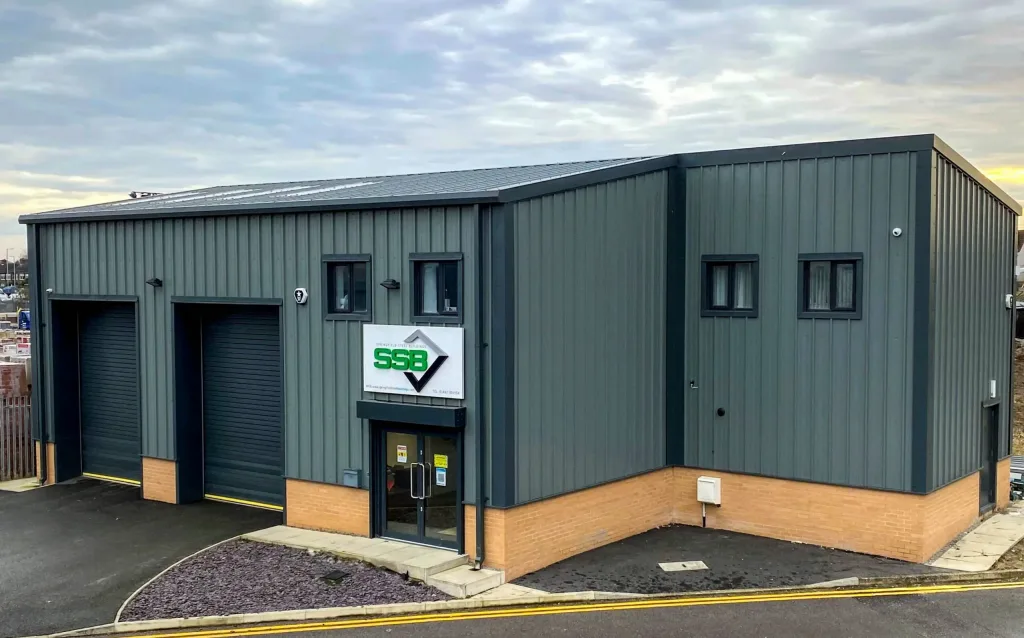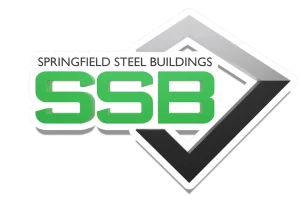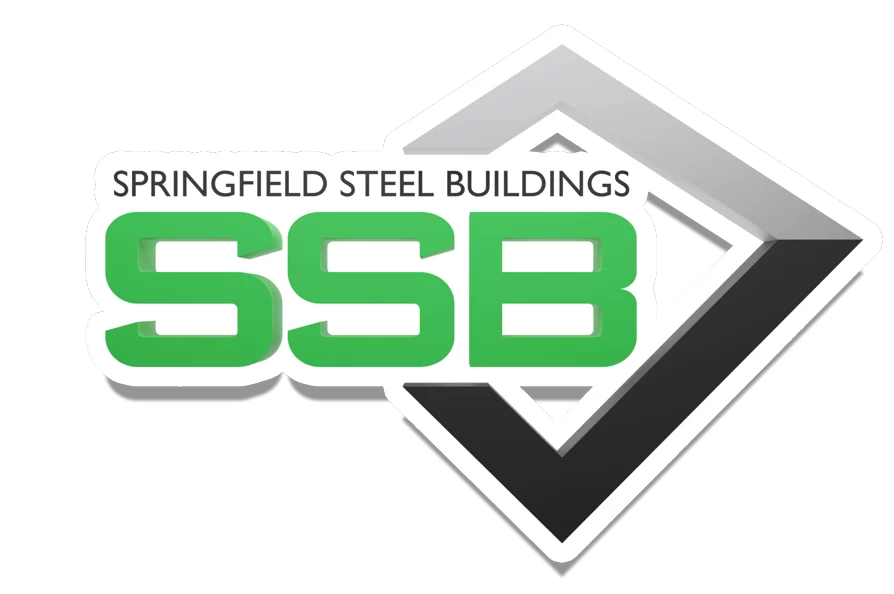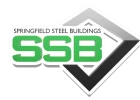When it comes to constructing buildings, insulation plays a crucial role in enhancing energy efficiency, regulating temperature, and providing cost savings. This guide will delve into the different types of insulation suitable for steel buildings and other applications, with a particular focus on cladding insulation. Whether you’re constructing a new steel structure or need to insulate your new shed, understanding insulation options and benefits can help you make informed decisions that improve your building’s performance and comfort, as well as helping you ultimately decide whether you need insulation or not.
At Springfield Steel Buildings, we have 10+ years of experience designing and installing steel buildings to meet various needs, which gives us hands-on knowledge about insulation and it’s use cases across all industries, like steel buildings, garden buildings and even homes.
Understanding Insulation.
What is insulation?
Insulation for steel buildings and other types of building refers to the materials and methods used to reduce heat transfer and improve thermal efficiency. Proper insulation helps maintain a stable indoor climate, reducing the need for excessive heating or cooling. This not only leads to significant energy savings but also enhances the overall comfort of the building’s occupants.
What is insulation used for?
- Energy Efficiency: Insulating steel buildings minimises heat loss in winter and heat gain in summer, leading to reduced energy consumption and lower utility bills.
- Temperature Regulation: Effective insulation maintains a consistent indoor temperature, protecting against extreme weather conditions.
- Cost Savings: While the initial investment in insulation might be substantial, the long-term savings on energy costs can be substantial.
- Moisture Control: Insulation helps prevent condensation, which can lead to corrosion and other structural issues in steel buildings.
- Noise Reduction: Insulating materials can also reduce noise transmission, creating a quieter indoor environment.
By understanding the significance of insulation, building owners can prioritise it in their construction or renovation projects, ensuring better performance and longevity of their steel structures.
Types of Insulation and Cladding Insulation
Choosing the right type of insulation is crucial for optimising the energy efficiency and comfort of steel buildings. This section covers both the general types of insulation and the specific role of cladding insulation in steel structures, with a focus on Kingspan products.
Types of Insulation
Fibreglass Insulation
Fibreglass insulation is one of the most widely used types of insulation in steel buildings. It consists of fine glass fibres and is available in batts, rolls, or loose-fill forms.
- Advantages:
- Excellent thermal performance
- Cost-effective
- Easy to install
- Fire-resistant
- Applications: Ideal for insulating walls, roofs, and floors in shed buildings.
- Average Cost: Approximately £3 to £7 per square metre.
- Example products: Knauf Insulation
Spray Foam Insulation
Spray foam insulation is a versatile and effective option for steel buildings. It is applied as a liquid that expands and hardens, filling gaps and creating an airtight seal.
- Advantages:
- Superior thermal insulation
- Provides an air barrier
- Reduces moisture infiltration
- Long-lasting and durable
- Applications: Suitable for insulating walls, ceilings, and hard-to-reach areas.
- Average Cost: Approximately £20 to £30 per square metre.
Reflective Insulation
Reflective insulation, also known as radiant barrier insulation, consists of reflective materials like aluminium foil that reflect radiant heat away from the building.
- Advantages:
- High thermal reflectivity
- Lightweight and easy to handle
- Effective in hot climates
- Can be used in combination with other insulation types
- Applications: Commonly used in roofs and walls to enhance overall thermal performance.
- Average Cost: Approximately £3 to £10 per square metre.
- Example Products: Wickes Insulation Foil
Cladding Insulation for Steel Buildings
What is Cladding Insulation?
Cladding insulation refers to the insulation material installed between the cladding and the steel framework of a building. This type of insulation is crucial for enhancing thermal efficiency and protecting the building envelope from environmental elements.
Kingspan KS1000RW Cladding
At SSB we specialise in and highly recommend Kingspan KS1000RW cladding, which ranges from 40mm to 150mm in thickness. This cladding system is designed for both roofs and walls, offering excellent thermal insulation and durability.
- Advantages:
- High thermal performance with varying thickness options
- Fire-resistant and weatherproof
- Quick and easy installation
- Suitable for a wide range of building applications
- Applications: Ideal for both new constructions and refurbishments, providing superior thermal efficiency for steel buildings. KS1000RW Cladding is an industry standard for top of the line composite cladding.
- Average Cost: Approximately £30 to £50 per square metre, depending on thickness.
Kingspan AWP Series Cladding
Kingspan AWP cladding offers a sleek, modern aesthetic while providing robust insulation properties like KS1000RW. It is an excellent choice for buildings that require both high performance and contemporary design.
- Advantages:
- Modern, aesthetically pleasing design
- High thermal efficiency
- Durable and weather-resistant
- Easy to install and maintain
- Applications: Perfect for commercial and industrial buildings looking for a combination of style and performance. The primary focus is aesthetics and design.
- Average Cost: Approximately £40 to £60 per square metre.
Single-Skin Cladding (Non Insulated)
In addition to Kingspan products, Springfield Steel Buildings are experienced with and also use single-skin cladding for various projects. Single-skin cladding is a cost-effective option that provides basic protection and insulation for steel buildings.
- Advantages:
- Cost-effective
- Lightweight and easy to install
- Suitable for various applications
- Applications: Used in non-insulated or minimally insulated buildings where cost is a primary concern.
- Average Cost: Approximately £10 to £20 per square metre.
Benefits of Cladding Insulation
- Thermal Efficiency: Cladding insulation significantly improves the thermal performance of steel buildings, reducing heat loss in winter and heat gain in summer.
- Protection Against Elements: It provides a barrier against wind, rain, and other weather conditions, extending the building’s lifespan.
- Aesthetic Improvements: Cladding insulation can enhance the appearance of the building, providing a sleek and modern finish.
Combining Insulation Types for Optimal Performance
For the best results, combining different types of insulation can provide comprehensive thermal protection. For example, using spray foam insulation for hard-to-reach areas and reflective insulation for roofs can maximise energy efficiency. Additionally, incorporating high-performance cladding like Kingspan KS1000RW or Kingspan AWP ensures that the building envelope is well-protected and thermally efficient.
By understanding and selecting the appropriate insulation types and materials, steel building owners can significantly improve energy efficiency, comfort, and longevity of their structures.
How to Choose the Right Insulation for Your Steel Building
Selecting the right insulation for your steel building involves considering several critical factors to ensure optimal thermal performance, cost-effectiveness, and compliance with local regulations. Here’s a guide to help you make an informed decision.
Factors to Consider
Climate
The local climate significantly impacts the type of insulation required. In colder climates, insulation with a higher R-value is necessary to retain heat, whereas in warmer climates, reflective insulation can help deflect heat and keep the building cool.
- Cold Climates: Prioritise insulation with high thermal resistance, such as spray foam or thicker cladding options like Kingspan KS1000RW.
- Warm Climates: Reflective insulation or insulated panels like Kingspan AWP can effectively reduce heat gain.
Building Usage
The purpose and usage of the building will dictate the insulation needs. For instance:
- Warehouses: May benefit from cost-effective single-skin cladding with additional internal insulation.
- Offices and Residential Buildings: Require higher thermal performance and often aesthetic considerations, making products like Kingspan AWP ideal.
- Temperature-Sensitive Operations: Such as food storage, will need robust insulation solutions like spray foam combined with insulated cladding.
Budget
Balancing initial costs with long-term savings is crucial. While high-performance insulation like Kingspan cladding may have a higher upfront cost, the energy savings and longevity often justify the investment.
- Cost-Effective Options: Single-skin cladding with additional internal insulation.
- High-Performance Options: Kingspan KS1000RW or Kingspan AWP cladding.
Local Building Codes
Ensure that the chosen insulation complies with local building regulations and standards, which can vary depending on the region and type of building.
Comparing Insulation Types
Fibreglass Insulation
- Pros: Affordable, easy to install, good thermal performance.
- Cons: Can irritate skin and lungs, requires careful handling.
- Best For: Budget-conscious projects, general wall and roof insulation.
Spray Foam Insulation
- Pros: Excellent thermal and air barrier properties, fills gaps effectively.
- Cons: Higher initial cost, professional installation recommended.
- Best For: High-performance insulation needs, sealing air leaks, hard-to-reach areas.
Reflective Insulation
- Pros: Effective in hot climates, lightweight, easy to install.
- Cons: Less effective in cold climates, requires an air gap to work efficiently.
- Best For: Roofs in hot climates, supplementary insulation.
Kingspan KS1000RW Cladding
- Pros: High thermal performance, fire-resistant, weatherproof, quick installation.
- Cons: Higher cost relative to single-skin options.
- Best For: Comprehensive building insulation, both new constructions and refurbishments.
Kingspan AWP Cladding
- Pros: Modern design, high thermal efficiency, durable, easy maintenance.
- Cons: Higher cost compared to other cladding options.
- Best For: Commercial and industrial buildings with a focus on aesthetics and performance.
Single-Skin Cladding
- Pros: Cost-effective, lightweight, easy to install.
- Cons: Provides basic protection and minimal insulation.
- Best For: Non-insulated or minimally insulated buildings, budget-conscious projects.
Maintenance and Longevity of Insulation
Regular Maintenance Tips
Proper maintenance of insulation in steel buildings is essential to ensure it continues to perform effectively over its lifespan. Here are some maintenance tips:
- Regular Inspections: Conduct routine inspections of insulation to identify any signs of damage or wear. Check for gaps, moisture accumulation, or signs of pest infestations.
- Moisture Control: Ensure that the building envelope is sealed properly to prevent moisture ingress. Use vapour barriers where necessary to protect insulation from dampness.
- Repair and Replace: Promptly repair or replace any damaged sections of insulation to maintain thermal performance. Small issues can escalate if left unaddressed.
- Cleaning: Keep the insulation area clean and free from debris, particularly in areas with exposed insulation like attics or underfloors.
- Ventilation: Ensure proper ventilation to prevent moisture buildup, which can degrade insulation materials over time.
Signs of Insulation Issues
Knowing the signs of insulation problems can help you address them before they affect the building’s performance:
- Inconsistent Temperatures: Uneven temperatures across different areas of the building may indicate insulation gaps or failures.
- Higher Energy Bills: A sudden increase in heating or cooling costs can signal that the insulation is no longer performing efficiently.
- Condensation: Visible condensation on walls, ceilings, or within the building structure can indicate poor insulation or moisture issues.
- Drafts: Feeling drafts in certain areas suggests that the insulation is not effectively sealing the building envelope.
Longevity of Insulation Materials
Different insulation materials have varying lifespans, and proper installation and maintenance can extend their effectiveness:
- Fibreglass Insulation: Typically lasts 20-30 years with proper maintenance. It can settle over time, reducing effectiveness.
- Spray Foam Insulation: Can last 80 years or more if properly installed and maintained. It forms a rigid barrier that remains stable over time.
- Reflective Insulation: Generally lasts 10-20 years, depending on the environment and installation quality. Regular inspections can help maintain its reflectivity.
- Kingspan KS1000RW and AWP Cladding: These products are designed for long-term durability and can last 40-60 years with proper care, thanks to their robust materials and weather-resistant properties.
By following these maintenance tips and being aware of the signs of insulation issues, steel building owners can ensure their insulation remains effective, contributing to the building’s energy efficiency and comfort over the long term.




